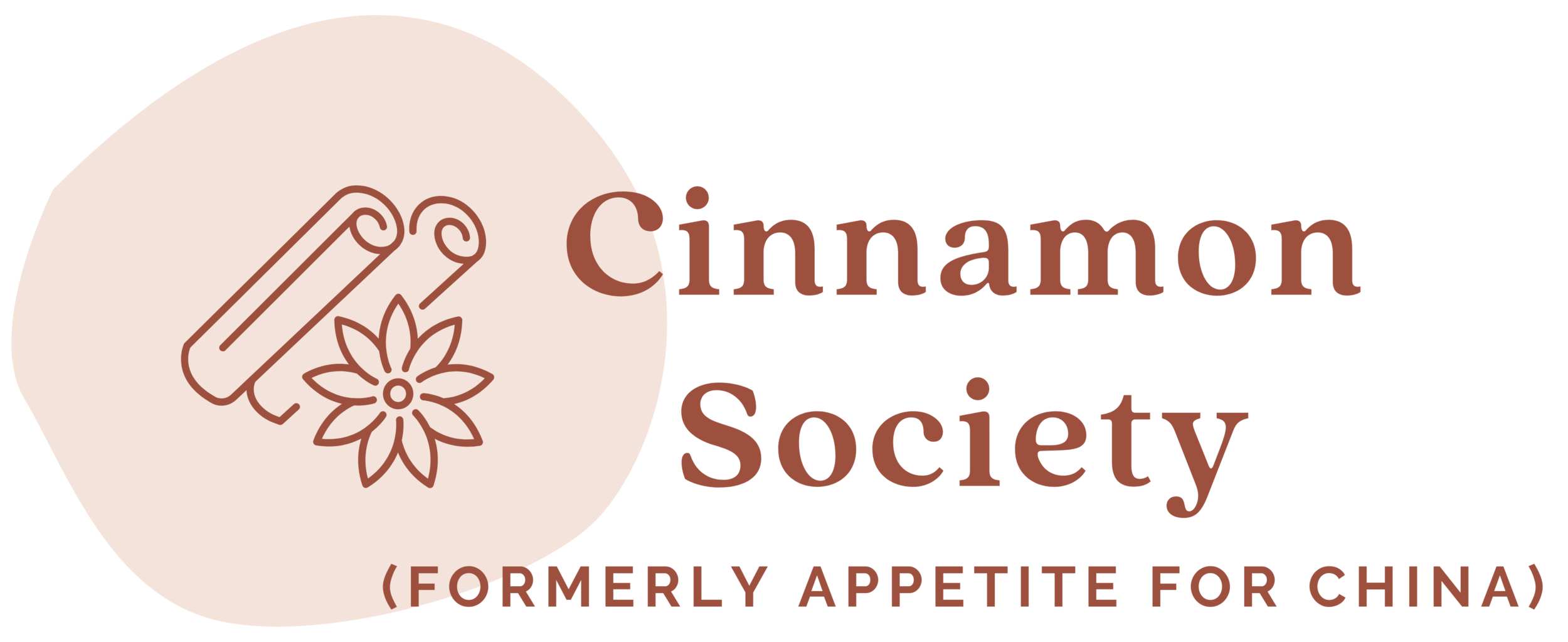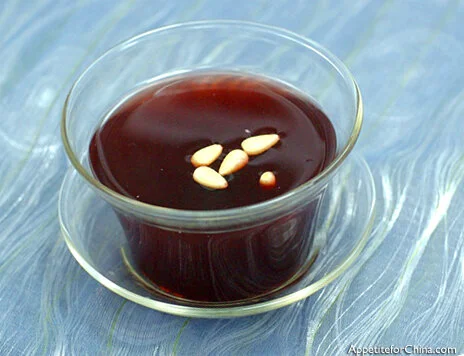I remember a time when pork belly was shunned in the U.S. as a fatty, undesirable cut of meat. But thanks to a few big-name chefs, this unctuous piece of hog is gracing some of the country's most popular dining spots. David Chang's Berkshire pork belly in a bun may have been the most lusted-after dish in New York in the past 5 years.
Which is why I'm surprised red-braised pork is still not very popular outside of China. It's one of the least fiery dishes in the entirety of Hunan cuisine, and very easy to make at home. What omnivore can resist a dish of braised pork cooked with sugar, cinnamon, chilis, and star anise? The smells alone are intoxicating, and make me jittery with anticipation as I count down the minutes until braising is done.
The version of hongshao rou I like best is from Fuchsia Dunlop's Revolutionary Chinese Cookbook: Recipes from Hunan Province. (Did you know this was Mao Zedong's favorite dish? The satisfaction of eating it, of course, transcends ideology.) An especially helpful tip Dunlop gives is to first plunge the meat into boiling water; partially cooked pork belly is much easier to cut. To make the sauce, you simply caramelize the sugar, add water and the whole dried spices, then let simmer for less than an hour. (Also see Red Cook's version, which includes garlic and no chilis.) A simple bowl of white rice is the best absorbent for the fragrant and hearty sauce.
Read MoreI am a huge fan of cooking with whole spices. Ground cinnamon can never substitute cinnamon sticks in a braise. Ground Sichuan pepper doesn't have the same punch as whole or crushed peppercorn. And I'm prone to ignoring a recipe's call for ground cumin, when whole cumin has been the friend that never disappoints.
The fragrance of freshly toasted whole cumin can make me delirious with hunger. I know that whatever's touched with cumin will be smoky, substantial, and evocative of a far-off land blessed with pungent spices. If the food on this site seems cumin-heavy, that's because I use heaping spoonfuls and, when working off other recipes, double or triple the amounts. Is there a support group for this kind of spice addiction?
This eggplant and black bean salad is a great backdrop for another cumin invasion. The spice adds a nutty dimension to the eggplant, and highlights the saltiness of the black beans. (Salted black beans, also called fermented black beans, is usually found in the preserved goods section of a Chinese market. Rinse before use.) Try this appetizer not only with Chinese main courses but also Middle Eastern dishes.
Read MoreThe latest photographic tome by Jeffrey Alford and Naomi Duguid is anything but a traditional cookbook. Part travelogue, part recipe collection, and part ethnographic treatise, Beyond the Great Wall takes an in-depth look at the foods of China's non-Han minorities.
As always, their photos are amazing, making me want to hop on the next plane to Kashgar, just to start. And the recipes, even with exotic-sounding names like Tajik nan and Kazakh pulao, seem surprisingly comfort-food-ish. There are also instructions for momos, those spectacular little dumplings from that famous and newsworthy province in the southwest. Most of the recipes are quite easy, thanks to the authors' substituting a few unorthodox ingredients for more familiar ones (a yak bone broth becomes oxtail broth, etc.)
I decided to begin with a ginger and carrot stir-fry from the Miao minority in Guizhou province. The important part to note is that the namesake ingredients are julienned. Mandolines would help, but if you want a rugged challenge and have strong hands, slicing everything with a cleaver also works. The original recipe also called for pork strips, but I decided to substitute with my local market's bean curd skin, which hooked me by being pre-shredded.
I ate the finished dish with rice, but I'm thinking next time to scoop this on top of a nice plate of stir-fried noodles.
Read MoreThis cinnamon and ginger tea, served cold, is possibly the perfect drink for both summer and fall.
Read MoreDespite my pledge to eat healthier, I'm still on an Indian-Chinese food kick this week. Following up my fried Gobi Manchurian, I decided to make fried chicken lollipops. A good excuse would be that this is a handy appetizer to know in case I ever host a last-minute party.
Since chicken is one of two meats that are popular in India (the other being lamb), it's not surprising that cooks would get creative with a little drumstick. All you need is a paring knife to cut the tendons and scrape down the meat so the meat forms a nice round ball at the end. And the end result is wings that are much less messy to eat, especially when you're dealing with the hazards of a spicy, sticky sauce.
I first made lollipops way back in culinary school in my hors d'œuvre module. My chef-instructor hinted that this was his original idea, and that he deserved credit if we were to ever offer them on our own restaurant menus. I was impressed, until later when I began to see these not only in Indian-Chinese restaurants but also on the Food Network. So much for original ideas. At least you can rest assured that this is a better lollipop method than jamming chicken nuggets on popsicle sticks.
Read MoreI'm sure most Westerners who have ever dined with a group of Chinese are familiar with the the following scenario. After a ___-course lavish banquet, you look forward to something nice and sweet to cap off a great experience. Your Chinese hosts inform you that you'll love the dessert; all Westerners love dessert. This one is a Chinese specialty. Anticipation mounts. Then the long-awaited dessert arrives...in the form of red bean soup. You take one sip, utter an "Mmm!" with all the false bravado you can muster, and wonder if anyone will notice you "watering" that plant close by.
Yes, it is well known that most Chinese desserts are merely tolerated by Westerners. While I personally don't mind red bean soup or other sweet dessert soups every once in a while, other people, like a certain significant other of mine, have developed an intense fear of them. It's understandable. While in the West we crave and lust after rich chocolates, cakes, and pies, the Chinese palate can tolerate only moderately sweet things. Thus, Chinese desserts never seem sweet enough, but anyone living or traveling extensively in China can't help but encounter them again and again.
Read More
In the dead of summer in Sichuan province, folks regularly eat incredibly spicy, stomach-burning hot pot with the belief that sweating profusely will cool you off. It makes sense, then, that some of the world's spiciest cuisines (Mexican, Indian, Malaysian, etc.) hail from the hottest climates.
I cook and eat spicy food year-round, even if I have to pour myself an enormous iced drink and blast the fan to enjoy it. My latest dish from two nights ago is a simple but very addictive Sweet Chili-Glazed Tofu. If you're a fan of mapo tofu, like 99.5% of people who have ever eaten Sichuan food, this is another good tofu recipe to try. More tongue-tickling spicy than ma la, with a sweet kick and subtle fruity aroma from cider vinegar, this quickish stir-fry makes an easy one-bowl dinner. With lettuce wraps instead of rice, it also becomes a good backyard cookout appetizer.
Read More
